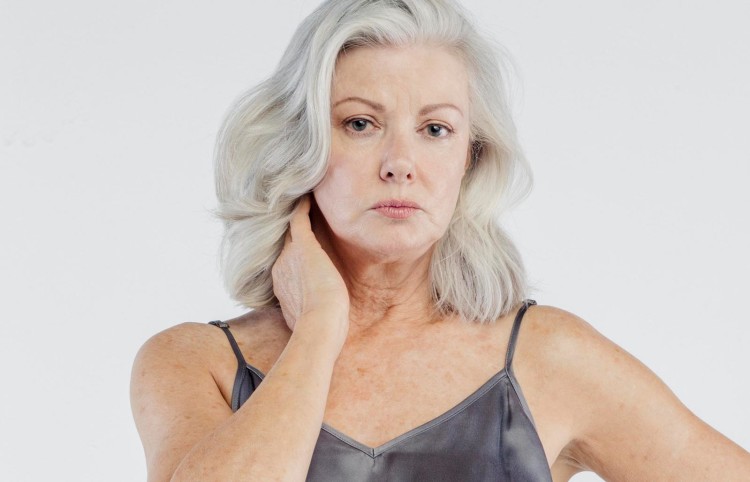Revanesse: What You Need to Know
Pros & cons
How much it costs
Revanesse vs. Juvéderm
What to expect
Safety considerations
Fast facts
Revanesse is a line of injectable dermal fillers made of cross-linked hyaluronic acid to smooth, plump, and contour the face. Manufactured by Prollenium in Canada, Revanesse fillers are known for being refined and high-quality, with a high viscosity (thickness) that makes them versatile and long-lasting.
Hyaluronic acid (HA) occurs naturally in the skin, where it attracts and holds up to 1,000 times its weight in water, keeping skin plump and hydrated. The synthetic form of HA in Revanesse temporarily diminishes wrinkles, smooths folds, and restores facial volume.
The family of Revanesse products includes several formulas, each with their own properties.
Two formulas are currently available in the U.S.:
- Revanesse Versa (and Revanesse Versa+, which includes the local anesthetic lidocaine) is approved by the U.S. Food and Drug Administration (FDA) for the treatment of moderate to severe facial wrinkles and creases. Results last about a year.
- Revanesse Lips+ is FDA approved for lip augmentation and the treatment of lip lines. Patients report minimal to no swelling, and results last about six months.
In Canada and elsewhere, patients have these additional options:
- Revanesse smooths fine lines and wrinkles.
- Revanesse Pure nourishes and moisturizes the skin, to restore elasticity.
- Revanesse Ultra treats moderate to deep wrinkles and restores volume.
- Revanesse Contour contours and shapes large areas.
- Revanesse Shape treats very deep folds, lines, and wrinkles.
- Revanesse Kiss defines and augments the lips.
Pros
- In one clinical trial funded by the manufacturer, 50% fewer patients treated with Revanesse Versa experienced swelling, compared to those treated with a similar filler from an unnamed competitor.
- Results are apparent immediately and last up to a year.
- Revanesse Versa Is the only filler in the U.S. that's available in a 1.2mL syringe size, which gives you 20% more product per syringe than other HA dermal fillers.
- In addition to adding volume, hyaluronic acid-based dermal fillers help stimulate new collagen growth, helping aging skin look and act younger.
Cons
- All hyaluronic acid filler results are temporary. You’ll need another treatment every year or so, to maintain your results. (Longer-lasting fillers include Bellafill and Radiesse.)
- Availability in the U.S. is limited, with only Revanesse Versa and Lips+ approved by the FDA.
- While the chance of an allergic reaction is low, it's a potential risk with any type of injectable filler.
- Average Cost:
- $625
- Range:
- $373 - $1,200
The price you pay will depend on your injector's level of experience, their practice location, and how much filler they use. Most treatments require one to two syringes.
Cosmetic filler treatments are not covered by insurance.
RealSelf Tip: While it may seem like dermal fillers are an easy treatment that can be done by anyone offering the lowest price, good results are very technique-dependent. Take your time to research your injector's credentials, read patient reviews, make sure you like the results in their before and after photos, and find out how often they treat patients with fillers.
Particularly if you're getting under-eye fillers, it's worth it to pay more to be in experienced hands.
There are a number of HA injectable fillers on the market, including Juvéderm, Restylane, and Belotero. They’re all used for similar purposes but vary in formulation, viscosity, and longevity.
Revanesse fillers use uniform, spherical particles of cross-linked hyaluronic acid that are smaller and more highly refined than those used in fillers like Juvéderm. These tiny, round particles have been shown to produce less swelling, one of the most common side effects of injectables.
With their high molecular weight, the hyaluronic acid particles in Revanesse fillers were developed to break down slowly over time. In the manufacturer’s clinical trials, 78% of people who received Revanesse Ultra for their nasolabial folds had results that lasted up to 12 months—similar in longevity to Belotero. Comparatively, some Juvéderm and Restylane fillers last just six months.
You can seek out fillers by brand name, but in most cases, your provider will evaluate your concerns and facial rejuvenation goals to choose the filler (or a combination of fillers) that’s best for your treatment area.
First, you’ll first discuss your goals with your injector. They will evaluate your facial anatomy and determine how to best use filler (and, possibly, complementary treatments like Botox) to achieve your desired results.
They will then clean the treatment area and apply a numbing cream, unless the selected formula already includes lidocaine (as with Revanesse Versa+).
They’ll inject the filler in the "mid-to-deep dermis" of your skin, using an ultrafine needle or a microcannula, while gently massaging the area with their fingers, to smooth it out.
You’ll notice a difference immediately, though it may take a couple of weeks for the filler to settle completely so you can see your final results.
Some RealSelf members say they had minor swelling and bruising around the injection site, but this usually resolves within a few days.
Related: Injectable Bruises? Here's How to Handle Them Without Hiding Out.
Revanesse treatments are considered to be safe. The most common side effects are bruising, swelling, and redness at the injection side, but these issues tend to be minor and fade relatively quickly.
Infection and allergic reactions are possible but very rare.
Another rare but more serious risk of all dermal fillers is vascular occlusion, in which the filler is accidentally injected into a blood vessel and cuts off the blood supply to the surrounding tissue, potentially leading to tissue death, blindness, or stroke. Learn more about the risk of vascular occlusion and how to avoid it.
Updated June 13, 2023

